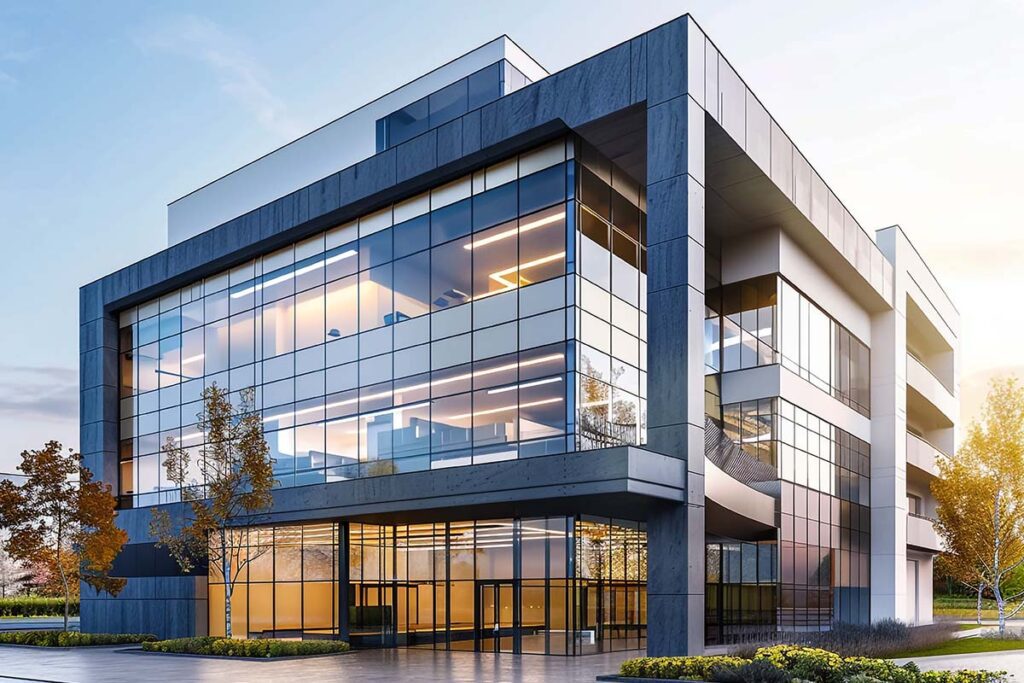The construction sector is undergoing a significant metamorphosis, with pre-engineered buildings (PEB) leading this transformation. Once regarded as a specialized niche for warehouses and industrial facilities, pre-engineered structures have adapted to fulfil the requirements of contemporary construction endeavours, providing economical, versatile, and eco-friendly options. We’ll delve into the ascent of pre-engineered structures, their influence across various industries, and the reasons they are poised to define the future of construction.
Why Pre-Engineered Structures?
Pre-engineered buildings are fabricated and designed off-site before being assembled on-site. This approach offers numerous benefits compared to traditional building methods, such as:
Accelerated Construction: As components are pre-fabricated, the construction timeline is significantly shortened. This efficiency is vital in sectors where speed is synonymous with savings.
Budgetary Efficiency: By reducing labour needs and construction duration, pre-engineered structures deliver considerable financial savings.
Customizability: Contrary to the notion that PEBs lack adaptability, innovative designs facilitate tailored structures that fulfil unique demands, whether for industrial or commercial purposes.
Environmental Sustainability: Pre-engineered structures are environmentally conscious, typically constructed from recyclable materials and engineered to reduce construction waste.
Industry Expansion – Sectors Benefiting from Pre-Engineered Structures
Industrial Warehousing and Logistics Pre-engineered buildings have been crucial to the logistics industry for many years, especially in warehousing. The ability to create expansive, column-free areas is essential for logistics hubs and storage locations. In areas experiencing rapid industrial growth, PEBs have surged in popularity due to their quick erection and affordability.
Retail and Commercial Spaces With the retail market thriving, numerous businesses are choosing pre-engineered structures for their showrooms, malls, and shopping centres. The versatility of these buildings allows for stylish designs, ample display areas, and rapid construction – all critical elements in a fast-evolving market.
Agricultural and Cold Storage Facilities As the necessity for efficient farming practices escalates, pre-engineered facilities have become essential for cold storage units, processing plants, and storage barns. The insulation and climate control capabilities of these structures are vital for preserving perishable items, effectively increasing product longevity and minimizing food waste.
Healthcare and Educational Institutions Educational institutions, including schools and healthcare facilities, are increasingly turning to pre-engineered buildings to expand or establish new campuses. These structures offer a scalable solution capable of accommodating growing populations while ensuring durability and safety standards. Furthermore, the ability to quickly modify or extend buildings allows these institutions to grow without long-term disruptions.
Technological Innovations Fuelling Expansion
The emergence of BIM (Building Information Modelling) and other technological advancements has been instrumental in optimizing the design, production, and installation processes of pre-engineered structures. These breakthroughs have led to:
Accuracy in Design: BIM and computer-aided design (CAD) empower engineers to generate detailed models, minimizing errors and ensuring parts fit perfectly during assembly.
Enhanced Materials: New material technologies, like PUF (Polyurethane Foam) panels and insulated panels, guarantee that PEBs are not just resilient but also energy-efficient.
Improved Quality Assurance: Off-site production in regulated settings ensures uniform quality, diminishing the likelihood of site defects or material waste.
Challenges and Opportunities
Despite its swift expansion, the pre-engineered structure sector faces hurdles such as limited awareness in specific markets and the perception of constrained customization. Nevertheless, with a growing emphasis on sustainability, urbanization, and the demand for rapid infrastructure solutions, the prospects vastly exceed the challenges.
In markets like India, where urban growth is escalating, pre-engineered buildings provide a pragmatic answer to the increasing need for housing, commercial properties, and infrastructure development. Moreover, government initiatives fostering sustainable construction practices further stimulate the adoption of PEBs.
The Future of Pre-Engineered Structures
The outlook for pre-engineered buildings appears bright, characterized by ongoing technological advancements, escalating demand for sustainable solutions, and the need for rapid, efficient construction methods. In the years to come, we can anticipate that PEBs will occupy a more prominent role across multiple sectors, from healthcare and education to retail and logistics.
The ascendancy of pre-engineered structures signifies a crucial shift in our approach to construction. Quicker, more economically viable, and environmentally sustainable, these buildings are designed to meet the evolving needs of modern industries. As demand for versatile, scalable solutions continues to grow, pre-engineered structures will undoubtedly become an integral part of the construction landscape.



